Even well-trained pets sometimes behave badly and leave your home looking scruffy. Can you avoid the cat or dog damage? No, but you can repair it!
9 Pet-Damaged Furniture Repairs and Other Fixes
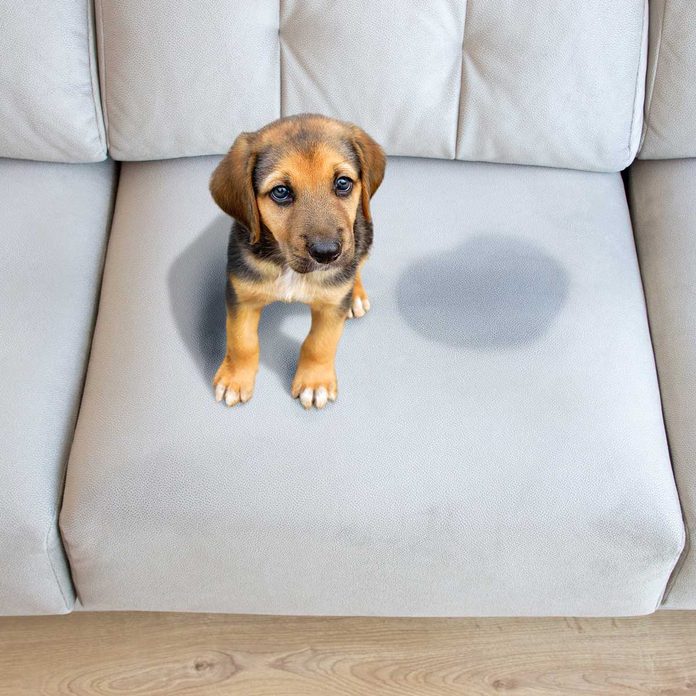
Pets Soil Your Carpet and Couch
Maybe your puppy is too young to be completely housebroken or your senior cat is struggling to use the litter box consistently. Or perhaps your pet is experiencing a medical condition that causes vomiting. You know they can’t help it, but that doesn’t change the fact that your carpet and/or your couch is now spotted with pet stains and odors. Get to know how to keep your dog off the couch.
Though some pet damage repairs can be delayed, damage from urine, feces or vomit needs to be taken care of ASAP. If not, the stains and odors will become permanent. Eventually your carpet pad and subfloor — or your furniture cushions — will become damaged as well.
Fix It: The best way to clean these stains and odors is with an enzymatic cleaner designed for pet waste, says Dr. Mikel Maria Delgado of Feline Minds Cat Behavior Consulting. Nature’s Miracle is one of many reputable brands. Be sure to follow the manufacturer’s instructions. Are homemade cleaners an option? No, says Delgado. Homemade cleaning products have their place, but they don’t have the chops to tackle this job.
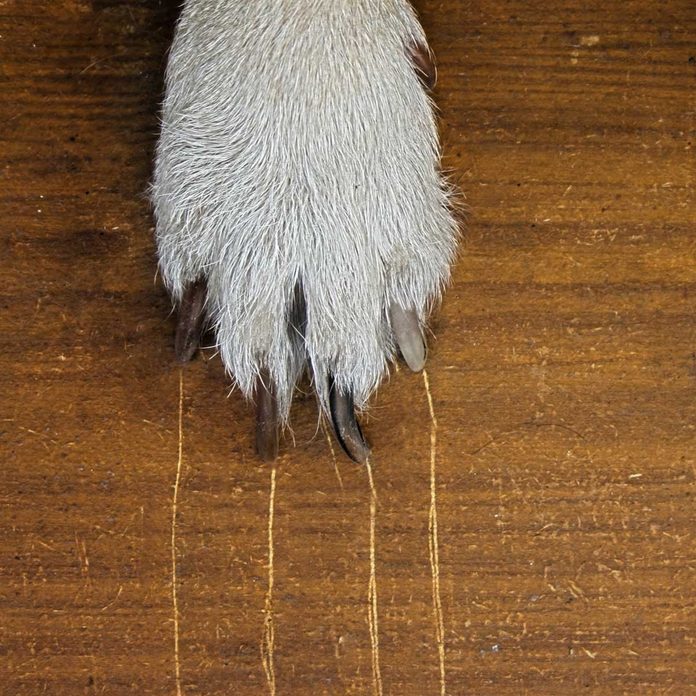
Pets Scratch Surfaces
Cats and dogs have claws, and they also like to run, jump, play and follow you around the house. Consequentially, damage to your hardwood (or laminate) flooring is pretty much inevitable, especially if your floor is a softer wood like pine or hemlock.
Like anything sharp, your pet’s claws dig into the floor’s finish. Over time, your once-pristine flooring starts to look shabby. Same goes for leather furniture and wooden tables, chairs, desks, etc.
Fix It: Depending on the degree of damage, you can improve the look of your scratched flooring by applying a restoration product, like Rejuvenate Wood Floor Restorer. While it won’t eliminate every scratch, it will go a long way toward disguising them and also bring back some of the shine.
Luckily, these products are pretty easy to apply — just spray on and mop. Be sure to do some research so you select a product that is compatible with your flooring. And because products of this nature can be toxic to pets, be sure to keep your cat or dog out of the room while you’re working. Also keep in mind this is best for surface scratches. At some point, professional restoration or replacement may be necessary.
For your leather furniture, try removing or disguising the damage with a leather coloring balm/repair kit or reconditioner. And if you find a cat-claw nick on a table? Try an easy-to-use touch-up marker to quickly cover the scratch.
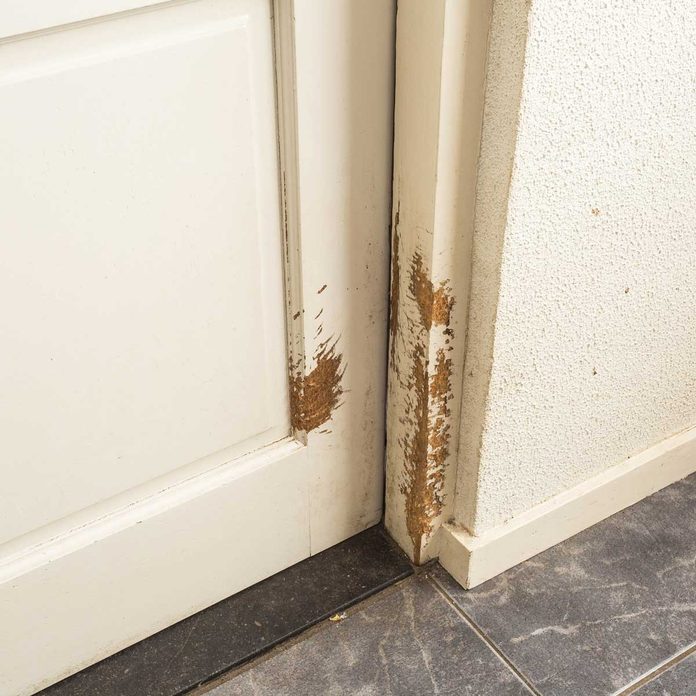
Pets Leave Claw Marks On Doors
If your dog likes to scratch at the back door when they are ready to go out, your door will pay the price. Even the most durable door isn’t designed to sustain such consistent abuse. Cats can damage doors with their claws, too. Felines are known to scratch at closed bedroom doors as a way to say “Let me in!”
Fix it: Some doors can be repaired with a quality paint job. However, if you have natural-finish wood doors, you’ll need to sand the damaged area, then apply a matching gel stain and clear protective coat of polyurethane.
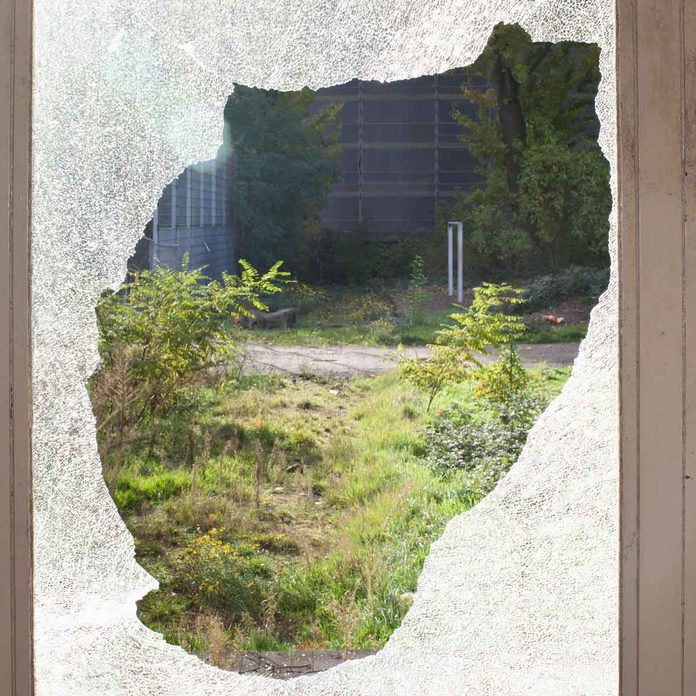
Pets Break Windows
If you have a dog that suffers from separation anxiety, or jumps when they see a squirrel or another dog outside, be prepared. It’s entirely possible they will break a window at some point, says Rain Jordan, a canine behavior specialist and certified professional dog trainer.
Dogs with separation anxiety sometimes jump onto windows out of fear and/or a desire to figure out where their person went. And an excitable dog may just want to show that squirrel who’s boss. The window? It’s collateral damage.
Fix It: Once a window breaks, the only fix is to replace it. Tempered glass is best, says Jordan, because it will hold up to future canine antics. Most importantly, it won’t hurt your dog the way basic window glass will.
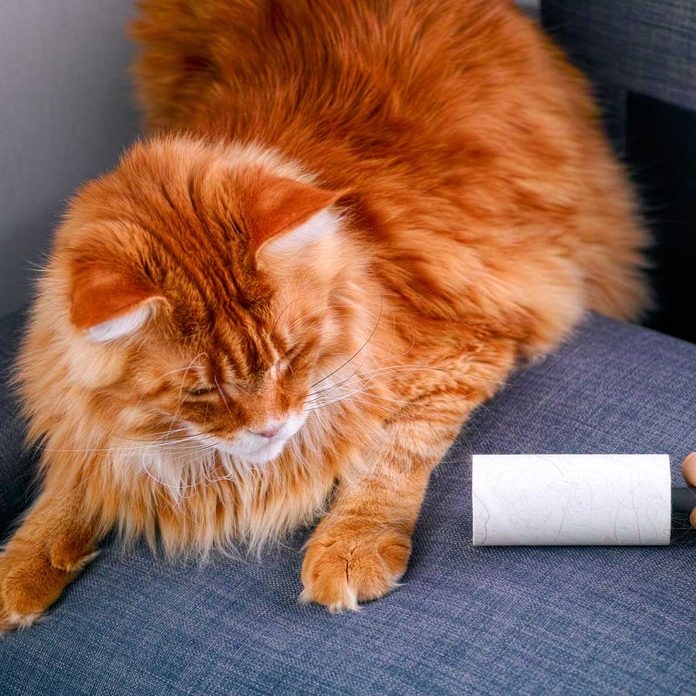
Pets Shed
Shedding is innocent enough, but did you know that shedding can actually damage household fabrics if left unchecked? It’s true — fur can get trapped in the fibers of your couch cushions, decorative pillows and area rugs. Once that happens, no amount of cleaning will get it out.
Fix It: Unfortunately, if you’ve let this go for any length of time, your best bet might be to replace the damaged item(s).
You can avoid the expense and hassle of replacement, though, by establishing a consistent fur-removal routine. That means vacuum regularly (some vacuums are designed specifically for pet fur removal) and invest in a hand-held roller like the ChomChom Pet Hair Remover. Brush your pets regularly and make sure they aren’t experiencing excessive stress, Jordan says, because stress can lead to shedding.
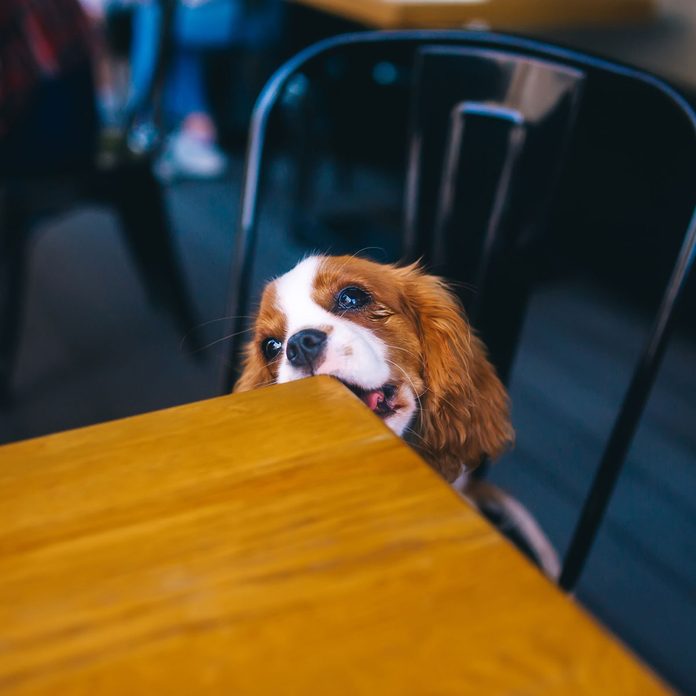
Pets Chew On Furniture
Dogs and cats have sharp teeth, and chewing is a completely natural behavior. But if your pet is chewing on tables, chairs and cabinets, you may have a bigger problem on your hands.
With a puppy, it could just be youth and the need for additional training. Or it could indicate a medical issue, especially with older pets. So if the chewing is rampant, be sure to consult your veterinarian to rule out any health problems.
Dogs, specifically, might even be chewing on furniture to squelch boredom, according to the American Kennel Club. In any case, chewing is brutal on your furniture. Once you know your dog or cat is OK, fixing the behavior and damage is top priority. Stop your dog from chewing the furniture with these home remedies.
Fix It: For superficial damage, a wood furniture repair marker is a good start. Find the closest color match and carefully color in the damage (this trick also works for superficial claw marks).
If the damage is extensive, though, you may be looking at a multi-step refinishing process that involves cleaning, sanding, filling with epoxy and refinishing or repainting. It’s definitely DIYable but prepare for a learning curve if you are new to furniture repair and refinishing.
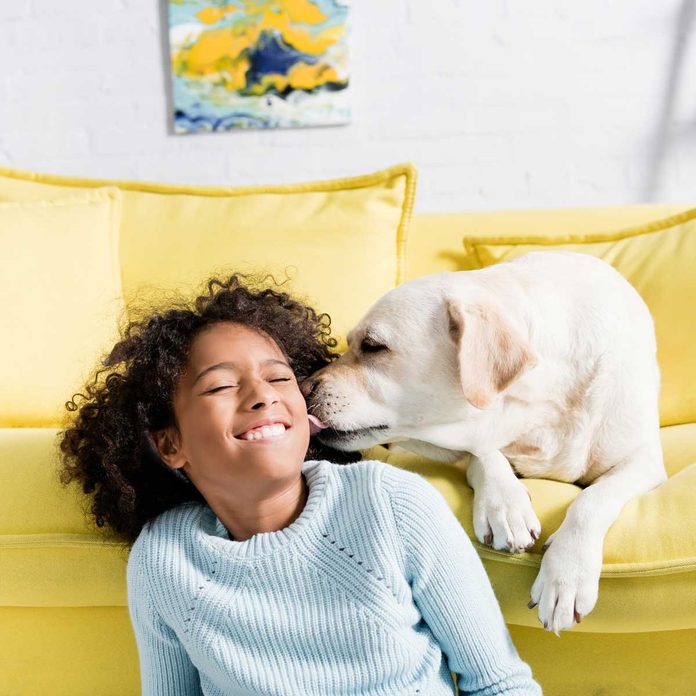
Pets Lick Furniture
Pets love to hang out on the couch with you, and this makes your comfy couch or plush recliner somewhat of a pet-damage catch-all. But it isn’t just scratching and soiling that you have to worry about. Some pets like to lick couches, and this can leave bacteria and odors behind. It can also signify a medical problem so, again, Jordan says take your pet to the vet if you notice this behavior.
And while you love your pet to pieces, you don’t want your binge-watching zone to become bacteria- and odor-infested. What to do?
Fix It: Washable blankets are your saving grace (removable covers are also an option). Toss them over your pet’s favorite spot on the couch and wash them regularly. While this is no guarantee your pet won’t lick some other spot on the couch or another piece of furniture, it does increase the chances that the licking will at least remain contained.
But what if it is too late and your dog or cat has already left a month’s worth of saliva on your couch cushions? Much like the carpet situation, clean up the saliva with an enzymatic cleaner formulated for pet waste as soon as possible.
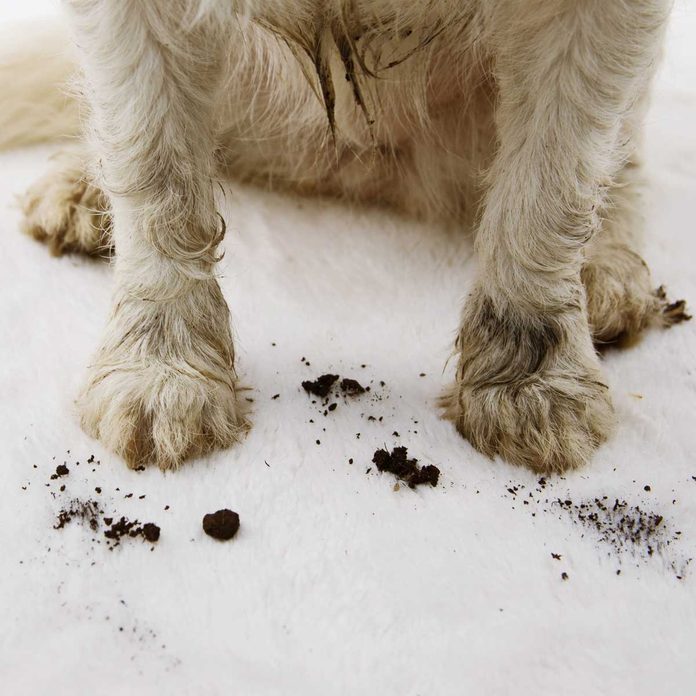
Pets Track Dirt In From Outside
Walks and outdoor playtime are great for dogs, but you never know what they might drag in on those mischievous paws. At the least you’re looking at dirt, mud and yard debris, although it’s possible your dog will step on a dead bird or even dog poop. Yuck!
Obviously, for health and sanitation reasons you don’t want any of those things coming into your kitchen or winding up on the floor where your toddler plays. Plus, it can leave permanent stains on carpet and other fabric.
Fix It: Still, dirt happens. After the fact, the best thing you can do is clean, clean and clean again. Mop up anything your dog tracks in as soon as they return from their outdoor adventures. And if they took their muddy paws onto your white carpet? Once again, that enzymatic cleaner is your go-to.
You can also try to minimize the need for an extensive post-walk clean up by placing an absorbent microfiber mat by the door. Some people even wash their dog’s paws before they re-enter the home. Cats, of course, usually prefer to bathe themselves.
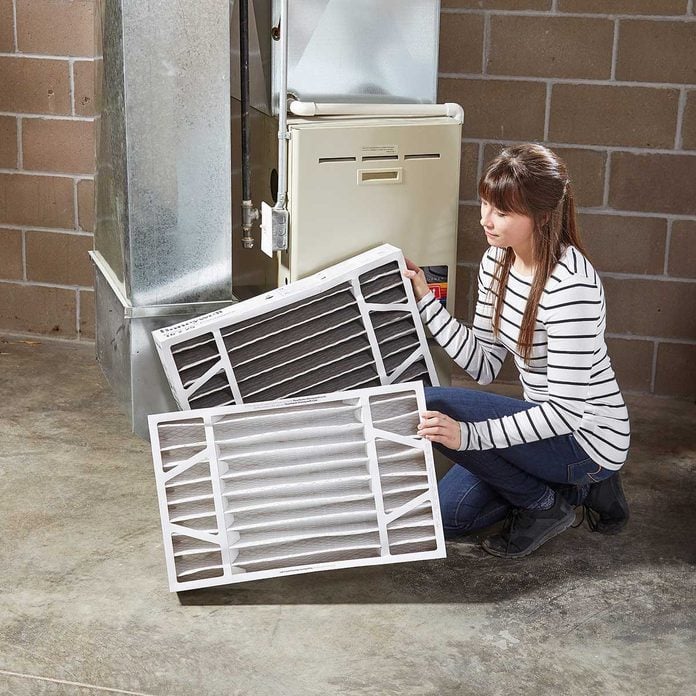
Pets Can Interfere With Your HVAC System
No, we’re not saying that your cat or dog is fiddling with the thermostat while you’re away. But if your pet is a shedder, chances are at least some of that fur and dander is making its way into your furnace filter. Over time this can clog your filter, which in turn can negatively impact its function and efficiency.
And if someone in your house is prone to allergies? A furnace filter clogged with pet hair is a real problem because all those allergens wind up circulating and recirculating throughout the house. Ah-choo!
Fix It: This fix is an easy one, especially since the fixes are tasks everyone (pet or no pet) should be doing regularly anyway. First, vacuum your home frequently so you can “catch” the pet-related allergens before they find their way to your filter. Then inspect and change your filter on a set schedule. Most experts recommend inspecting it monthly, vacuuming it to remove any pet hair, and replacing it quarterly.
